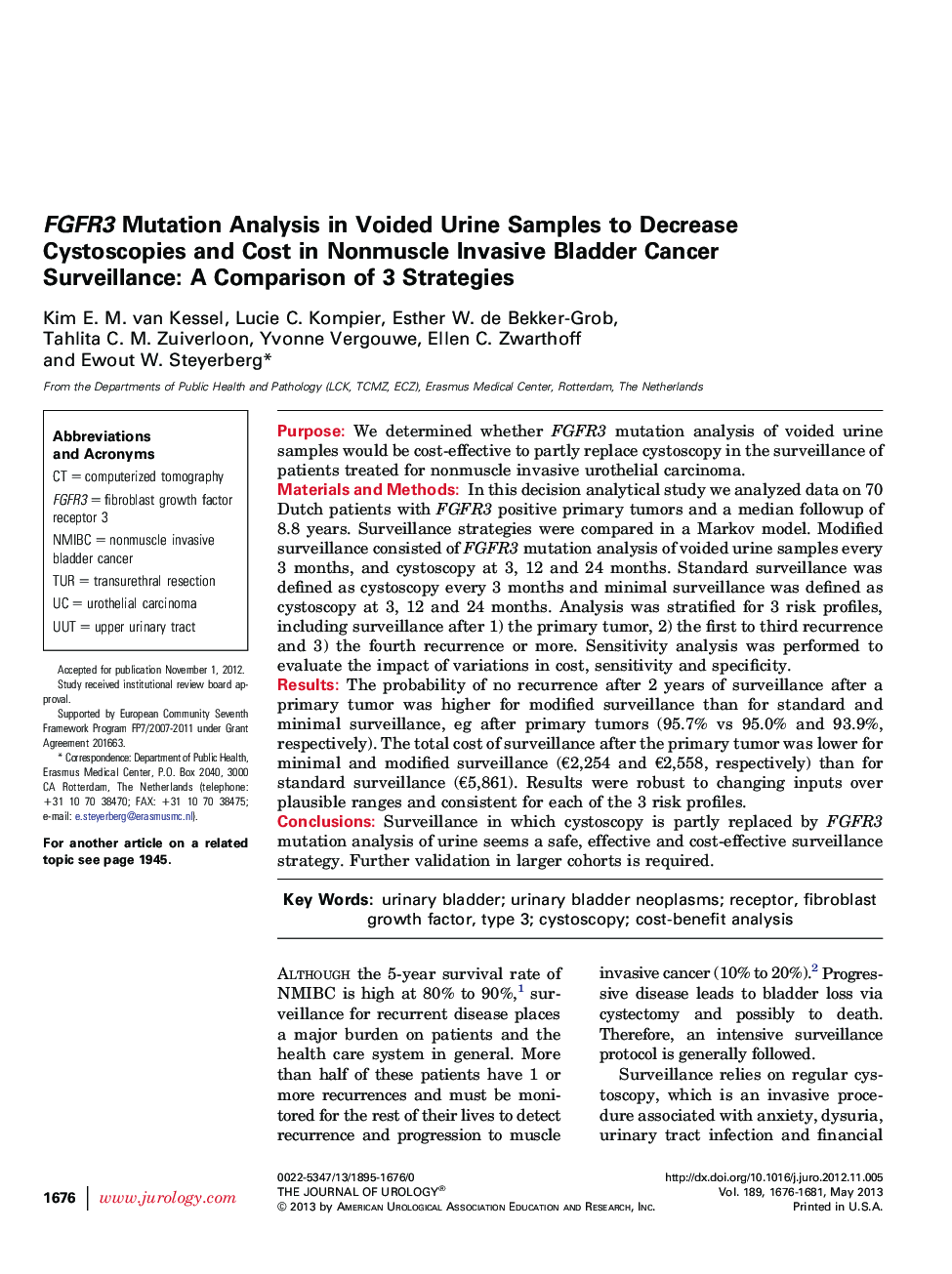| Article ID | Journal | Published Year | Pages | File Type |
|---|---|---|---|---|
| 3864738 | The Journal of Urology | 2013 | 6 Pages |
PurposeWe determined whether FGFR3 mutation analysis of voided urine samples would be cost-effective to partly replace cystoscopy in the surveillance of patients treated for nonmuscle invasive urothelial carcinoma.Materials and MethodsIn this decision analytical study we analyzed data on 70 Dutch patients with FGFR3 positive primary tumors and a median followup of 8.8 years. Surveillance strategies were compared in a Markov model. Modified surveillance consisted of FGFR3 mutation analysis of voided urine samples every 3 months, and cystoscopy at 3, 12 and 24 months. Standard surveillance was defined as cystoscopy every 3 months and minimal surveillance was defined as cystoscopy at 3, 12 and 24 months. Analysis was stratified for 3 risk profiles, including surveillance after 1) the primary tumor, 2) the first to third recurrence and 3) the fourth recurrence or more. Sensitivity analysis was performed to evaluate the impact of variations in cost, sensitivity and specificity.ResultsThe probability of no recurrence after 2 years of surveillance after a primary tumor was higher for modified surveillance than for standard and minimal surveillance, eg after primary tumors (95.7% vs 95.0% and 93.9%, respectively). The total cost of surveillance after the primary tumor was lower for minimal and modified surveillance (€2,254 and €2,558, respectively) than for standard surveillance (€5,861). Results were robust to changing inputs over plausible ranges and consistent for each of the 3 risk profiles.ConclusionsSurveillance in which cystoscopy is partly replaced by FGFR3 mutation analysis of urine seems a safe, effective and cost-effective surveillance strategy. Further validation in larger cohorts is required.
